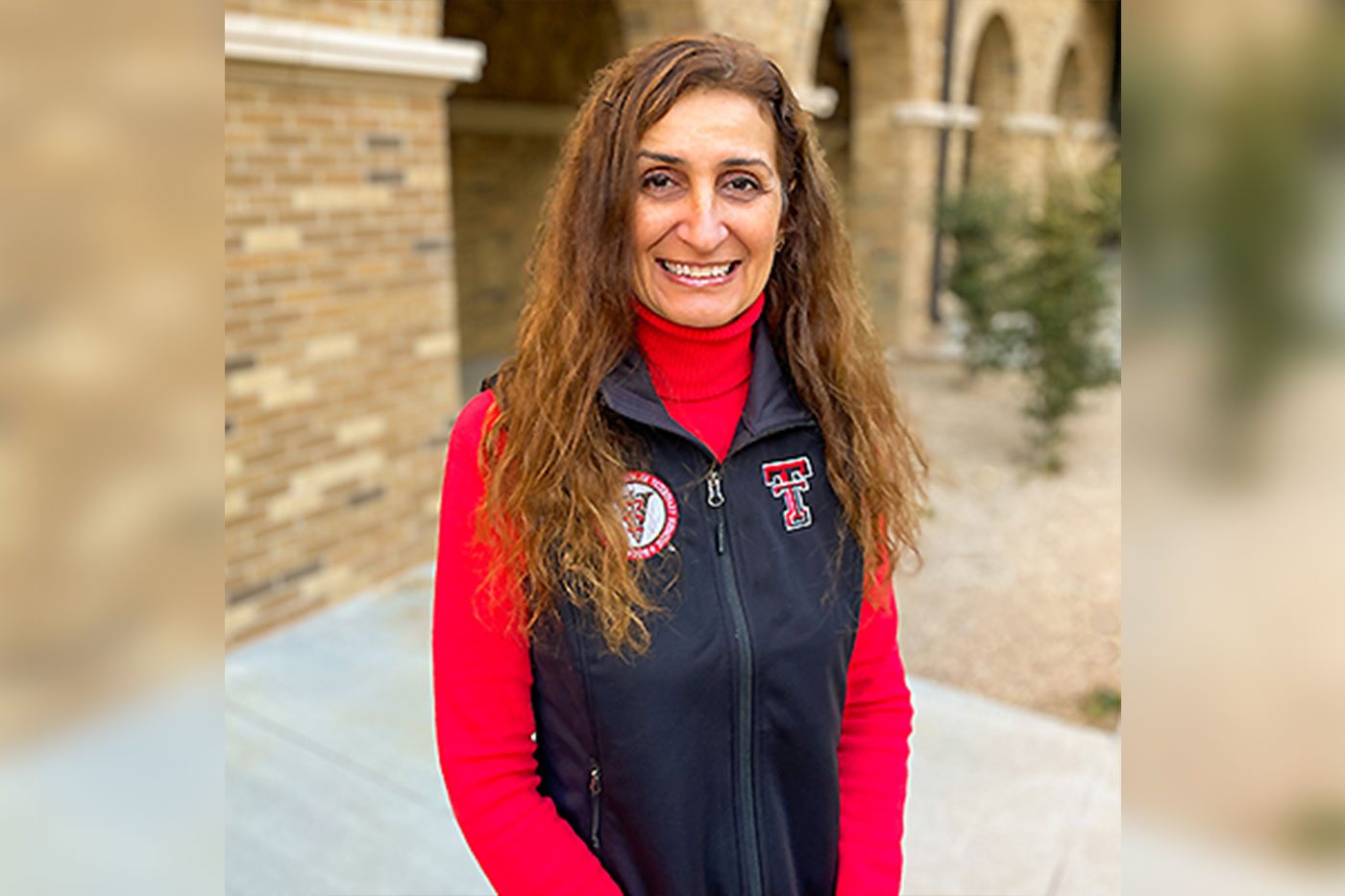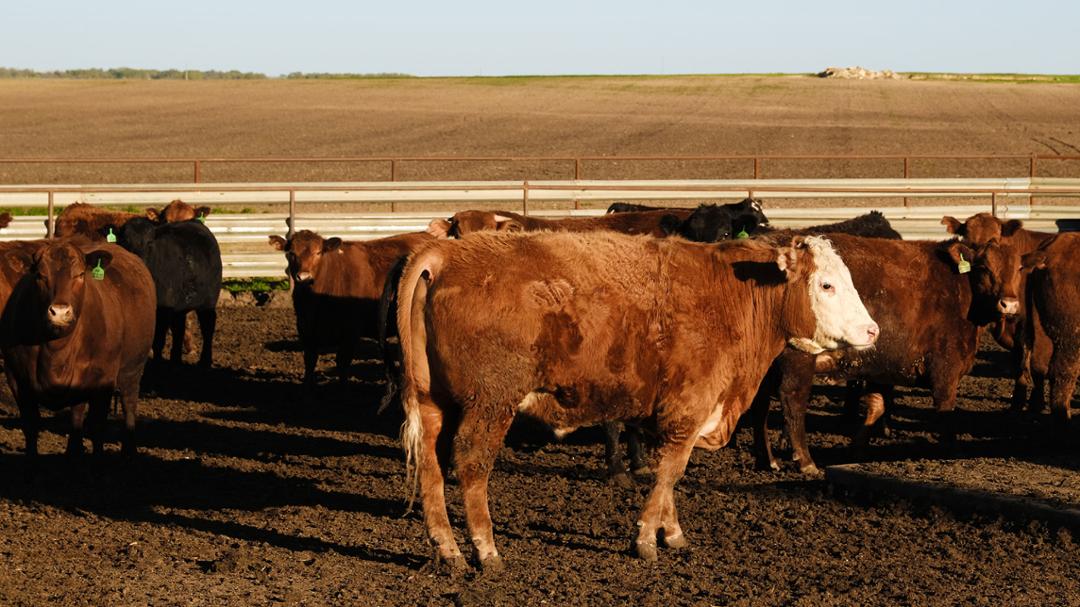The School of Veterinary Medicine team will use NIFA funding to enhance the ability of rural feedlots and dairies to carry out disease detection and animal health monitoring.
Rural communities are more connected to the world than ever before through technology. Wi-Fi has enabled these residents to work, shop and chat from the comfort of their remote locations.
Through these advancements, and a nearly $250,000 grant recently received by Texas Tech University’s School of Veterinary Medicine, even more services will extend to these towns in the next few years with regards to veterinary care. The funding, provided by the U.S. Department of Agriculture National Institute of Food and Agriculture (NIFA) will enable a team led by Elpida Artemiou, professor of veterinary communications, to provide targeted communication and educational training to feedlots and dairies.

The aim is to empower workers within these entities to take and share photos with their regular veterinarians to receive quicker postmortem diagnoses in instances where the practitioner is unable to make an immediate visit. The practice of veterinary medicine requires a valid veterinary-client patient relationship (VCPR). So, it is important that the on-site person trained to do necropsies works closely with their regular veterinarian who has the established VCPR.
Within the three-year grant period, the anticipated results are increased efficiency, better understanding of animal health and disease trends, improved disease prevention strategies and enhanced biosecurity.
“This is something that’s already starting to happen,” Artemiou noted. “There are several dairies that have the capability to do this, but certainly for locations where they’re quite remote, this will help dairies and feedlots significantly in terms of minimizing the risk of disease and spread of disease.”
This project aligns with the School of Veterinary Medicine’s purpose to serve the veterinary educational and service needs of rural and regional communities by mitigating the food animal veterinarian shortage. The remote animal health monitoring and disease detection will increase service critical to these areas.
“We are at the very initial stages right now, so at this point, we want to understand the challenges, the beliefs and attitudes surrounding postmortem examinations at feedlots and dairies,” Artemiou said. “We have developed a survey we hope will help us get a better understanding as to what are their challenges, and then, based on those results, to develop educational materials as well as communication programs to target what is happening in the field.”
With the survey results, Artemiou will have concrete details as to current postmortem examination practices in feedlots and dairies in the Texas Panhandle. These procedures, also known as necropsies, are vital for disease monitoring.
For instance, if 10 cows died following similar symptoms, there could be a timely problem that needs to be solved. Examining these animals postmortem can determine the cause of death and prevent further loss when issues such as diet and weather conditions are the culprit. Or, if it’s determined the cattle were suffering from an illness or disease, a proactive treatment plan can be developed to protect the rest of the herd.


Nathaly Vargas, a first-year doctoral student in the School of Veterinary Medicine’s Ph.D. in One Health Sciences program, has had the opportunity to visit local dairies and feedlots as part of this project. She observed within the practices a need for personnel who can perform postmortem examinations, especially in instances where the procedure simply never happened.
“We want to train more people so if their regular veterinarians are not on site, there is somebody else who can do these procedures to facilitate disease diagnosis so they can know the problem from the beginning,” Vargas explained. “We hope with the survey, we will have data that will help us support them and also enable us to develop training to cover the barriers that we will find.”
Artemiou is grateful the Texas Cattle Feeders of America (TCFA) is assisting with the survey development and distribution to the participating feedlots and dairies.
“We get to work with them to support our community,” she noted.
High School Outreach
AmTech Career Academy is another collaborator who will help with the secondary goal of the project: immersing high school students in feedlot and dairy visits to mitigate the shortage of food animal medicine veterinarians.
The Amarillo-based premier career and technical education high school will work closely with Artemiou to develop a time for their students to visit participating feedlots and dairies to introduce them to production medicine.


“We want to increase access to veterinary care in our region,” Artemiou said, “and we know that the earlier young people are introduced to field, the higher the chances they will appreciate its importance and actually engage in the practice.”
The high school students will learn alongside third-year School of Veterinary Medicine students as they practice field work, attend workshops and develop educational materials surrounding production medicine and standard operating necropsy procedures.
Artemiou believes this educational opportunity will not only develop a greater appreciation of the importance of food security but serve as a recruiting tool for the School of Veterinary Medicine.
“We hope these high school students will get excited about veterinary practice and then submit their applications to become veterinarians,” she said. “We would like to see them again someday.”
The project is equally beneficial for the School of Veterinary Medicine students involved, such as Vargas. Their participation will enable them to make an impact that could evoke change in knowledge, action and condition in the field of food animal medicine.
“That’s a really important opportunity we offer to our current students,” Artemiou said. “I also want to say that the success of this study is based on the great expertise and support we have at the university – as well as the external collaborators and supporters we have, such as TCFA and AmTech Career Academy.”

